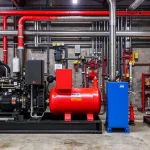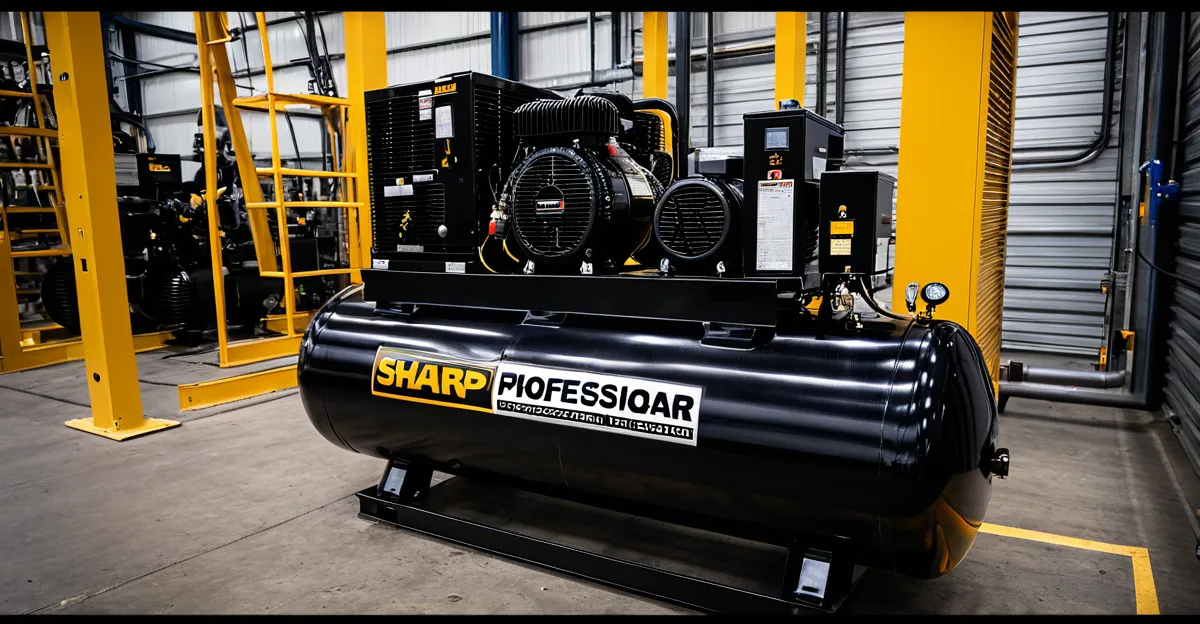Installing an industrial air compressor demands precise planning to meet both current and future air needs. Choosing the right size, ensuring proper airflow, and avoiding pressure drops are essential for reliable operation. Early collaboration with experienced consultants and HVAC professionals prevents costly mistakes and maximises system efficiency, turning a complex setup into a streamlined process that safeguards your investment over the long term.
Fulfilling Installation Needs: Expert Guidance for Industrial Air Compressor Setup
To achieve the right foundation for productivity, industrial air compressor installation begins with a detailed assessment of air demand. Professionals often conduct audits to determine exact requirements, guiding both compressor sizing and overall compressed air system design. A precise evaluation avoids both under- and over-sizing—each bringing unique energy and maintenance challenges. Proper sizing ensures system longevity and efficiency without unnecessary costs.
In parallel : Mastering your london fashion boutique”s story: an engaging step-by-step blueprint for a powerful brand narrative
Thorough site preparation comes next. Experts stress the need for clearances (typically at least three feet around air-cooled units) and proper ventilation. Good airflow prevents overheating, maintains safe temperatures, and supports consistent performance. Equipment should rest on level, solid surfaces, often with vibration pads to minimize noise and stress. Electrical connections must match site capability, using dedicated circuits and fused disconnects for safety.
Before commencing installation, a well-structured pre-installation checklist—including air intake filter placement, secure fittings, validated drain lines, and precise ductwork sizing—streamlines the process. This practice ensures each step is double-checked, minimizing disruption and the risk of costly errors.
Also to read : Comprehensive tree surgeon services in aberdeen uncovered
Engineering the Foundation: Site and System Requirements for Reliable Operation
Constructing a Stable Foundation and Addressing Vibration Isolation
Precise placement of an industrial air compressor begins with compressor foundation engineering: set the machine on a flat, level, and solid base to minimise vibration and maintain performance. Place vibration pads between the unit and foundation to dampen noise and decrease stress on machine components—this extends equipment lifespan and reduces maintenance headaches. Compressor alignment techniques are used to maintain true, stable operation. Rigid, uneven, or sloped surfaces can lead to excessive shaking, seal wear, or unexpected downtime; avoid these with accurate site preparation.
Ensuring Safety Compliance and Risk Minimisation During Installation
Installation safety protocols must align with safety standards for compressor installation. Complete a detailed industrial site risk assessment to identify hazards relating to electrical supply, airflow, and access. Proper electrical connections, fused disconnects, and grounding are needed for safe operation and maintenance. Keep clear space—at least three feet—around each unit for airflow and to provide unhindered access in emergencies. Use factory guidelines to guard against hazardous over-pressurisation with pressure valves and proper filtration.
Planning Optimal Layout for Maintenance and Future System Expansion
Access planning is key. Position compressors for unimpeded routine maintenance and system checks, considering future expansion or potential upgrades. Allow adequate ventilation and provide for filter changes, lubrication, and hose inspections. Design with flexibility so systems remain adaptable and serviceable as production grows or processes change.
System Integration and Performance Optimisation
Installing and configuring pipework, air receivers, and ventilation to industry standards
Precision starts with a robust compressed air pipeline layout. Each pipe should minimize bends and match the compressor’s airflow requirements to prevent pressure drops and energy loss. Pipework must be sized for expected volume and kept as straight and short as the site allows, with secure mounting to avoid vibration damage. Air receiver tank installation boosts storage, evens out pressure, and helps to condense moisture. Siting receivers near main demand points enhances system response.
Select a room with ample space—especially for maintenance—and provide at least three feet of clearance around all major components. Air compressor ventilation needs are best met by designing dedicated exhaust ductwork that moves warm air outside or redirects it for secondary use. Use larger ducts than the compressor outlet to maintain steady flow and avoid overheating.
Integrating dryers and filtration for high air quality and efficient cooling
Filtration systems integration is essential. Fit quality intake filters before compressors to trap airborne debris. Combine after-coolers, dryers, and point-of-use filters to reduce moisture and oil, safeguarding sensitive equipment. Proper sizing and placement of filtration improve air consistency and equipment protection.
Ensuring reliable airflow, discharge, and system compatibility
Every connection must withstand full pressure; regularly test joints to avoid air leaks and wasted energy. When connecting to existing systems, verify compatibility—older pipework or mismatched materials can reduce reliability. Configure drains on each compressor and receiver to prevent moisture buildup and mechanical blockages.
Commissioning, Cost, and Long-Term Maintenance Best Practices
Commissioning Protocols, Documentation, and Quality Verification Steps
Commissioning an industrial air compressor starts with a comprehensive checklist: confirm the machine is correctly sized, securely mounted, and all power, ventilation, and pipework connections are safe and sealed. Carefully inspect for air leaks using soapy water or ultrasonic detectors. Initiate post-installation testing by running the compressor within normal operating ranges, monitoring vibration, temperature, and pressure stability. Essential steps include verifying pressure regulator operation, safety valve function, and reviewing all installation documentation—especially alignment and electrical checklists. Create a permanent record of commissioning data, as this enables future diagnostics and warranty validation.
Managing Installation Costs, Project Scheduling, and Choosing Qualified Service Providers
Cost factors derive from equipment complexity, installation location, required ductwork, and integration with plant systems. Allocate additional budget for high-quality spares and professional installation services; these outlays reduce downtime and extend compressor lifespan. Effective project scheduling hinges on timely part delivery, coordination with electrical and HVAC installers, and allowing for comprehensive pre-commissioning checks. Qualified service providers, such as GTEC, streamline sourcing and ensure that all installation quality assurance requirements are fulfilled.
Best Practices for Ongoing Maintenance and Predictive Monitoring for System Longevity
Ongoing reliability depends on structured maintenance planning from day one. Key actions: schedule regular inspections for air filters, drains, lubricants, and belts. Develop a digital or paper-based maintenance record to track service, repairs, and parts replacement. Predictive monitoring tools—like vibration and temperature sensors—spot anomalies before they cause downtime. Planning for long-term upkeep not only preserves air quality and plant safety but also optimizes total lifecycle costs.











